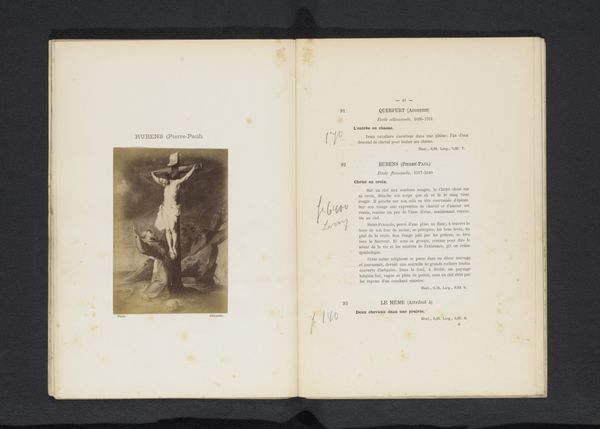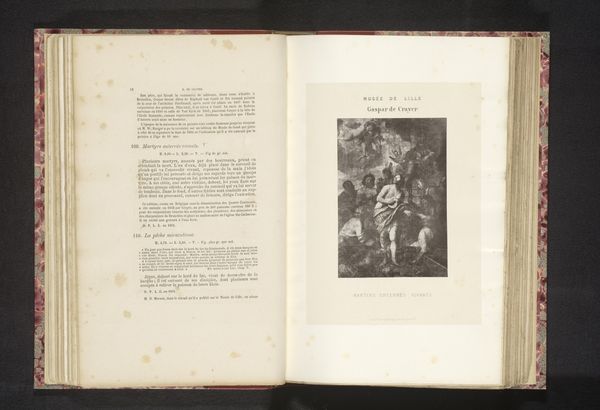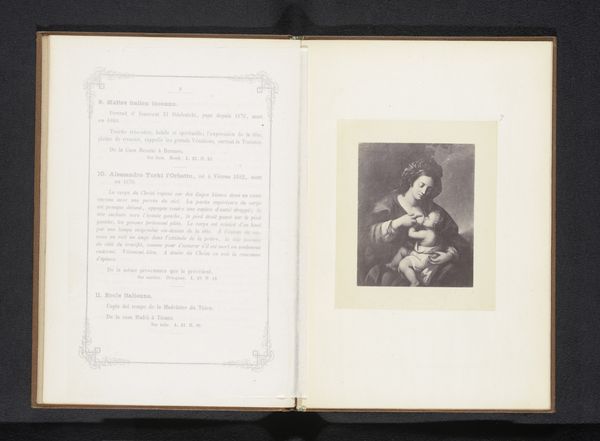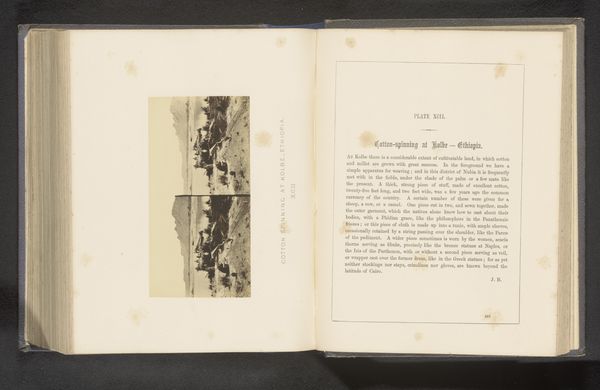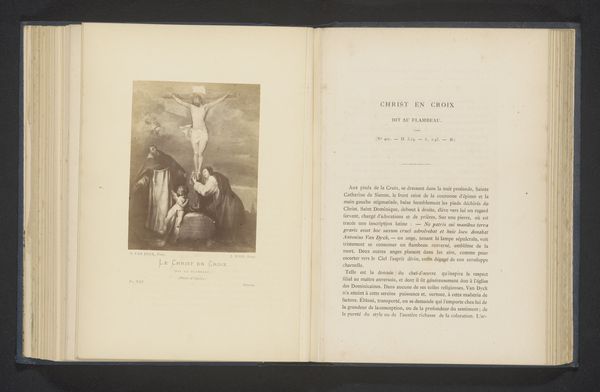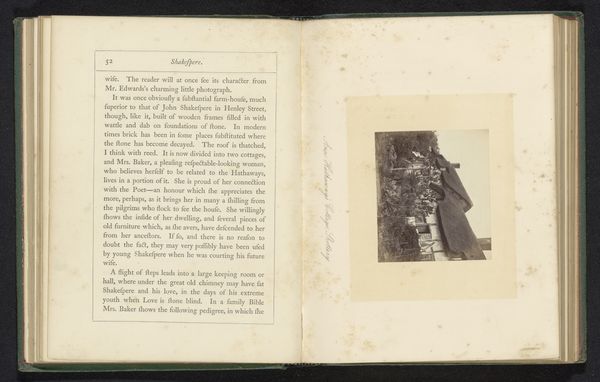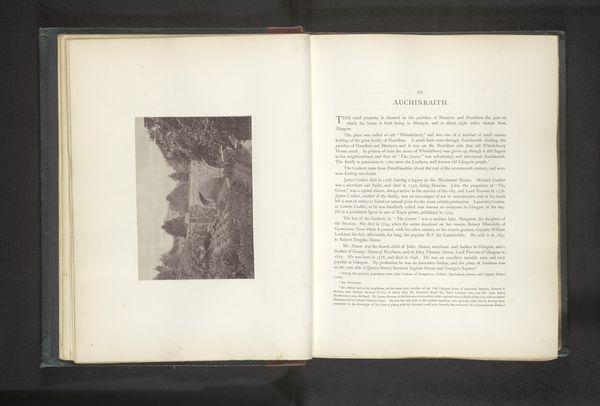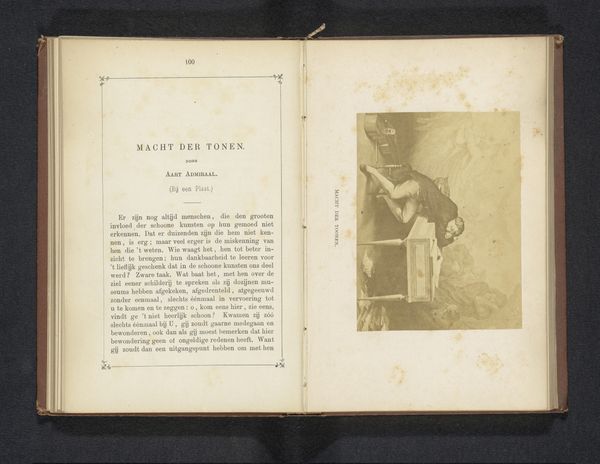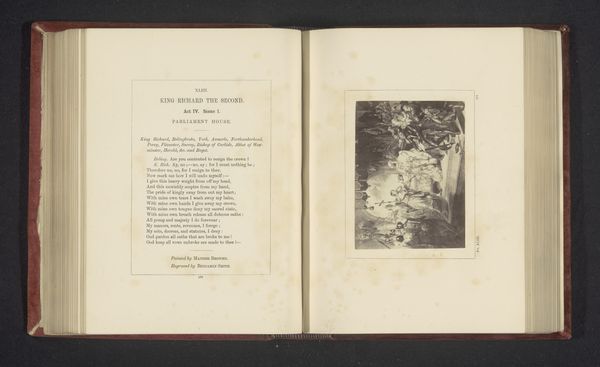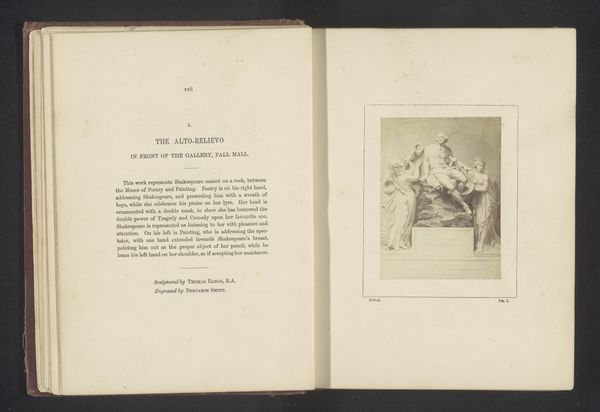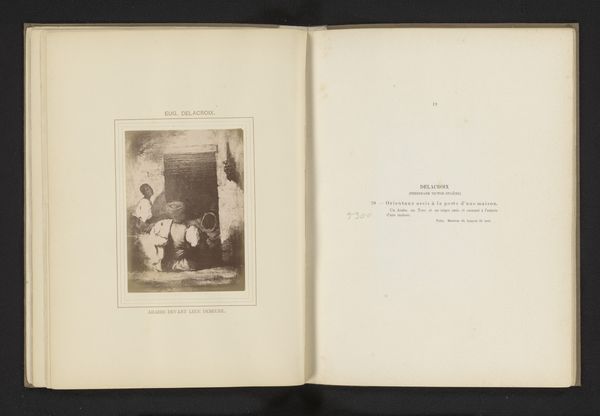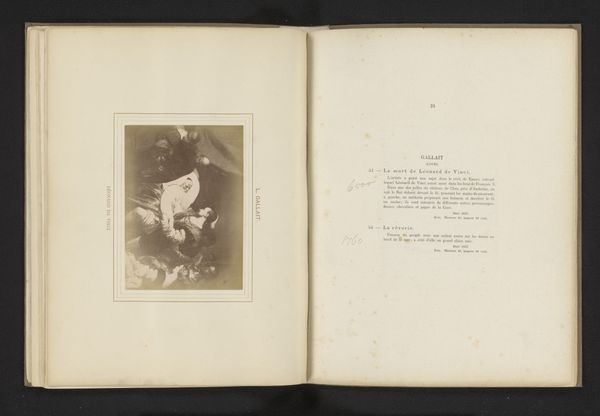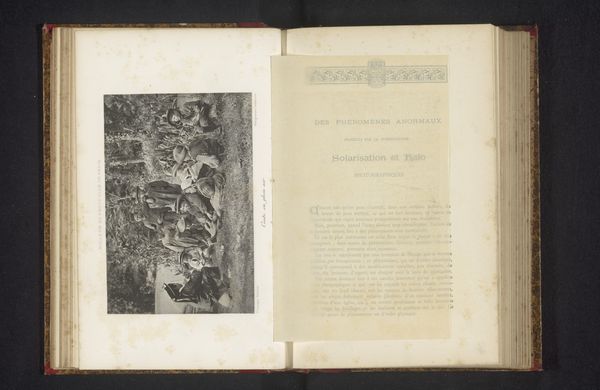
Fotoreproductie van het schilderij Woedende Medea door Eugène Delacroix before 1872
0:00
0:00
Dimensions: height 122 mm, width 75 mm
Copyright: Rijks Museum: Open Domain
Editor: Here we have a photographic reproduction of Eugène Delacroix’s “Woedende Medea” or "Medea enraged", made before 1872, and currently housed at the Rijksmuseum. What strikes me is the sense of intense drama, even in this small-scale reproduction within a book. How do you interpret this work in the context of its time, especially given its public reception? Curator: That's a great question. Consider the period. Delacroix, a Romantic painter, was operating in a society grappling with significant social and political upheaval. Romanticism itself was, in part, a response to the Enlightenment’s emphasis on reason. Delacroix chooses Medea, a figure of intense emotion and even violence. Why Medea? The play Medea touches upon gender roles, barbarianism and civilization, love and justice and their perceived opposites: hatred and revenge. Think about it from the viewpoint of public role of art during that time period, Delacroix using the figure of a woman abandoned with no alternative but infanticide: how was that to be viewed? Was it the politics of imagery at the time or simply another take on an old Greek story? Editor: It sounds like this artwork served as a stage to work through society's most volatile issues, which are as much a consideration today. Could it be, as you say, not merely an artwork but a declaration? Curator: Precisely. Delacroix’s painting, reproduced and disseminated like this, becomes part of a broader cultural conversation. The medium changes its accessibility, affecting how these powerful, difficult themes are publicly engaged with. Editor: Thank you. It gives me new insight into this Romantic painting. Curator: My pleasure. Analyzing the original painting as well as it's reproduction brings new avenues of consideration, even if just in a sketch book of historical information.
Comments
No comments
Be the first to comment and join the conversation on the ultimate creative platform.
